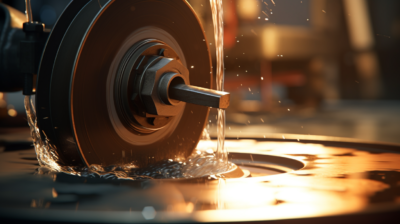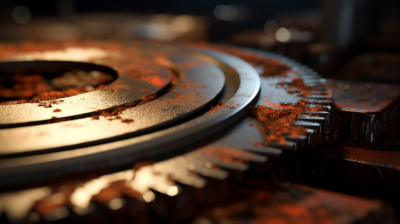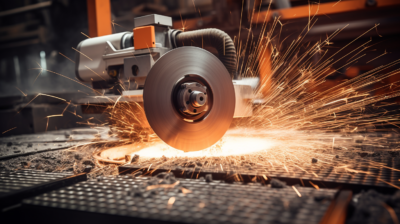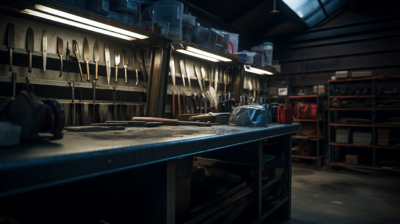Metal blades frequently encounter a vexing issue of rapid oxidation and rusting during wet grinding, posing challenges to their efficacy and durability. In this article, we delve into the complexities surrounding abrasive problems leading to accelerated rusting of metal blades post-wet grinding and propose actionable strategies to alleviate this concern.
1. Impact of Water Impurities: Throughout the wet grinding process, the water employed often harbors various impurities like dissolved oxygen, minerals, and chloride ions. These contaminants engage in chemical reactions with the metal blade surface, hastening the processes of oxidation and corrosion. Notably, dissolved oxygen emerges as a primary culprit behind metal rusting.
Strategy: Opt for pristine water as a coolant to diminish the adverse effects of water impurities on metal blades. Deliberate the use of deionized or distilled water, offering relative purity and mitigating the risk of blade rusting.
2. Environmental Humidity During Wet Grinding: Wet grinding ensues in the submersion of the blade surface in water, escalating ambient humidity levels. Elevated humidity fosters optimal conditions for the interaction between metal and oxygen in water, thereby expediting oxidation and rusting.
Strategy: Post-wet grinding, promptly subject the blades to drying procedures to minimize surface humidity. Employ methodologies such as blowers, dryers, or natural air drying to ensure a dry blade surface, thereby curtailing the likelihood of rusting.
3. Blade Surface Condition: The grinding process often disrupts the protective film on the blade surface, rendering the metal surface more reactive and susceptible to interactions with environmental oxygen and moisture. Additionally, surface imperfections like scratches or unevenness exacerbate corrosion vulnerabilities.
Strategy: Predispose the blades to thorough cleaning and pre-processing before grinding to attain a pristine and smooth surface. Following grinding, implement polishing techniques to eliminate minor scratches and irregularities, augmenting corrosion resistance.
4. Heat Generation During Grinding: Grinding operations generate substantial heat, elevating the temperature of the metal surface. Heightened temperatures expedite the chemical reaction rate between metal and water, augmenting the risk of rusting.
Strategy: Deploy adequate cooling measures during grinding, such as augmenting coolant flow or reducing grinding speed, to mitigate heat generation and accumulation. Simultaneously, uphold the commendable heat dissipation performance of grinding equipment to forestall blade overheating during the process.
5. Intrinsic Properties of Metal Blades: Diverse metals exhibit disparate corrosion resistance attributes. Certain metals, like iron and steel, demonstrate heightened susceptibility to rusting, particularly in humid environments.
Strategy: During the selection of metal blades, deliberate the utilization of materials boasting superior corrosion resistance properties, such as stainless steel or specialized alloys. These materials offer enhanced corrosion resilience, curtailing the propensity for rusting post-wet grinding.
In essence, the principal causative factors behind rapid rusting of metal blades post-wet grinding encompass water impurities, environmental humidity, blade surface condition, heat generation during grinding, and intrinsic metal properties. Through the judicious selection of coolant, meticulous control of environmental humidity, optimization of blade surface condition, prudent management of heat during grinding, and the adoption of corrosion-resistant materials, we can effectively mitigate abrasive problems leading to metal blade rusting, thereby bolstering blade longevity and operational efficiency.







